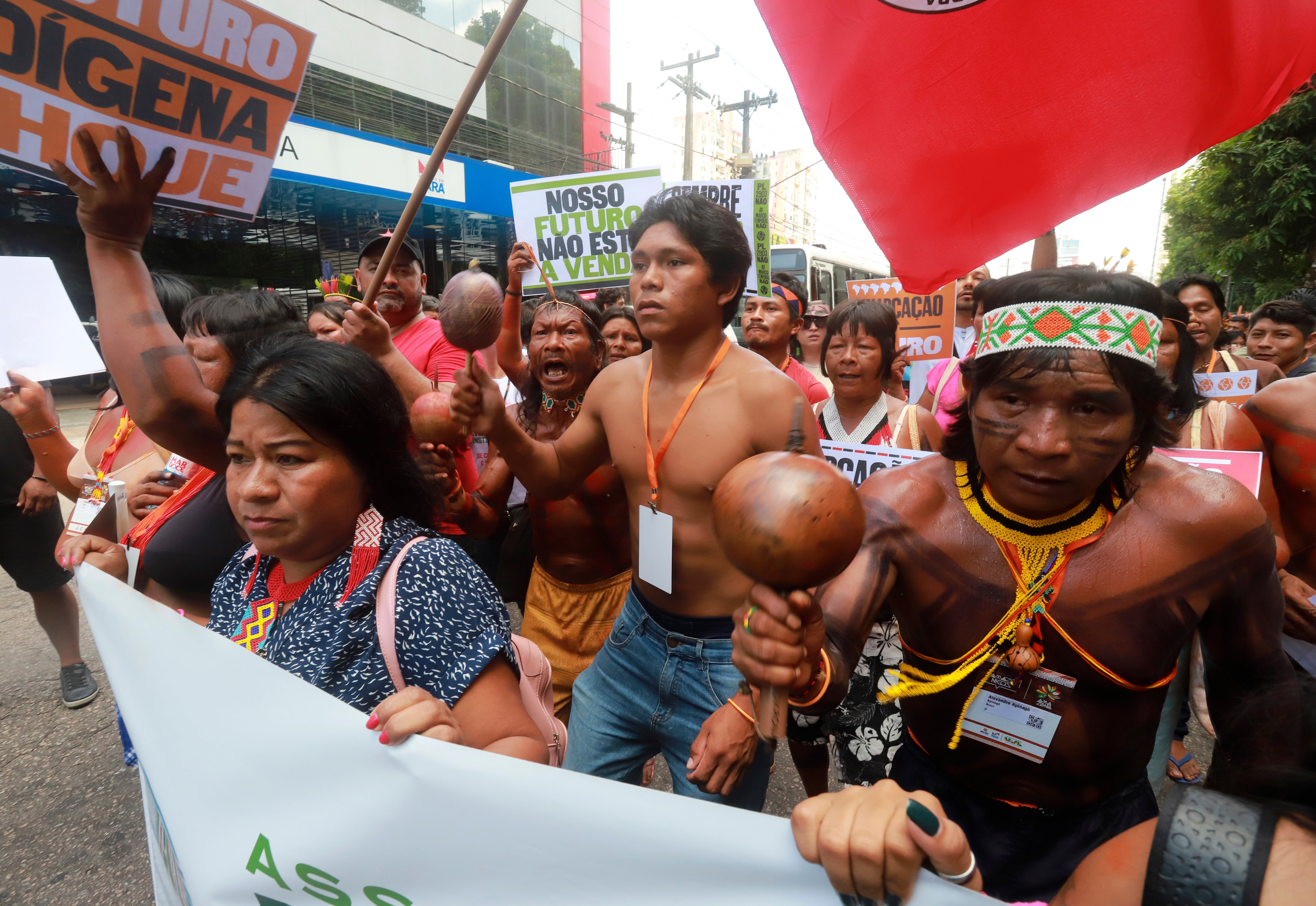CLIMATE GLIMPSE: Here’s what you need to see and know today as wildfires tear through Hawaii
As representatives from nations that span the Amazon rainforest gather in Brazil to discuss protecting a region critical to countering climate change, Indigenous people are a constant presence reminding them of the stakes

Your support helps us to tell the story
From reproductive rights to climate change to Big Tech, The Independent is on the ground when the story is developing. Whether it's investigating the financials of Elon Musk's pro-Trump PAC or producing our latest documentary, 'The A Word', which shines a light on the American women fighting for reproductive rights, we know how important it is to parse out the facts from the messaging.
At such a critical moment in US history, we need reporters on the ground. Your donation allows us to keep sending journalists to speak to both sides of the story.
The Independent is trusted by Americans across the entire political spectrum. And unlike many other quality news outlets, we choose not to lock Americans out of our reporting and analysis with paywalls. We believe quality journalism should be available to everyone, paid for by those who can afford it.
Your support makes all the difference.Leaders and ministers of eight nations that span the Amazon rainforest are meeting in Brazil to chart a course for the protection of a region that's crucial to countering climate change. As they meet in Belem, Indigenous people from the region are maintaining a constant presence to remind them of the stakes, as seen in this image by Associated Press photographer Paulo Santos.
Evidence of that climate change has been scattered across the globe this year, ranging from crushing heat to costly droughts and devastating flooding. On Wednesday, the reinsurer Swiss Re Group put a partial price tag on that, reporting that severe thunderstorms in the U.S. in the first half of the year led to $34 billion in insured losses.
That's an unprecedented level of financial damage in such a short time, Swiss Re said. The toll included 10 U.S. storms with damage of $1 billion or more, with Texas the state most severely affected. The U.S. storm damage was nearly 70% of $50 billion in global catastrophic damages so far this year that also included earthquakes in Turkey and Syria.
Here’s what else is happening related to extreme weather and the climate right now:
—Hawaii was getting an unpleasant taste of the wildfires that have struck so many places on the globe this summer. Most of the difficulty was on Maui, including Lahaina town, a historic area popular with tourists. Rescuers pulled a dozen people from the ocean, where they had fled from smoke and flames.
—In Norway, a dam partially burst Wednesday after days of heavy rain triggered landslides and flooding in the mountainous south. At least 1,000 people in communities near the Glama River were evacuated and the Braskereidfoss hydroelectric power plant was out of operation.
—Tuesday was the first time since July 2 that the global average temperature fell below 16.92 degrees Celsius, according to the University of Maine's Climate Reanalyzer. Until this year, 16.92 was the hottest day on record — which means that Earth just spent 36 days straight above the previous hottest day on record.
—Scientists have tagged global warming and El Nino as causes for the record-shattering heat. But they’re also looking at other possible factors contributing to the heat, including the eruption of an underwater volcano.
— Tropical Storm Khanun was bearing down on South Korea, grounding dozens of flights and ferries on Wednesday as it was forecast to hit major urban areas.
—The rapid ocean warming that has bleached Florida coral to perilous levels has also sparked a major effort to save and stockpile as much coral as possible for future restoration.
QUOTABLE:
“We have to change the whole world's attitude. And right now, Russia and China are very, very difficult partners.” — U.S. President Joe Biden, talking about tackling climate change in an interview Tuesday with The Weather Channel.
___
Associated Press climate and environmental coverage receives support from several private foundations. See more about AP’s climate initiative here. The AP is solely responsible for all content.